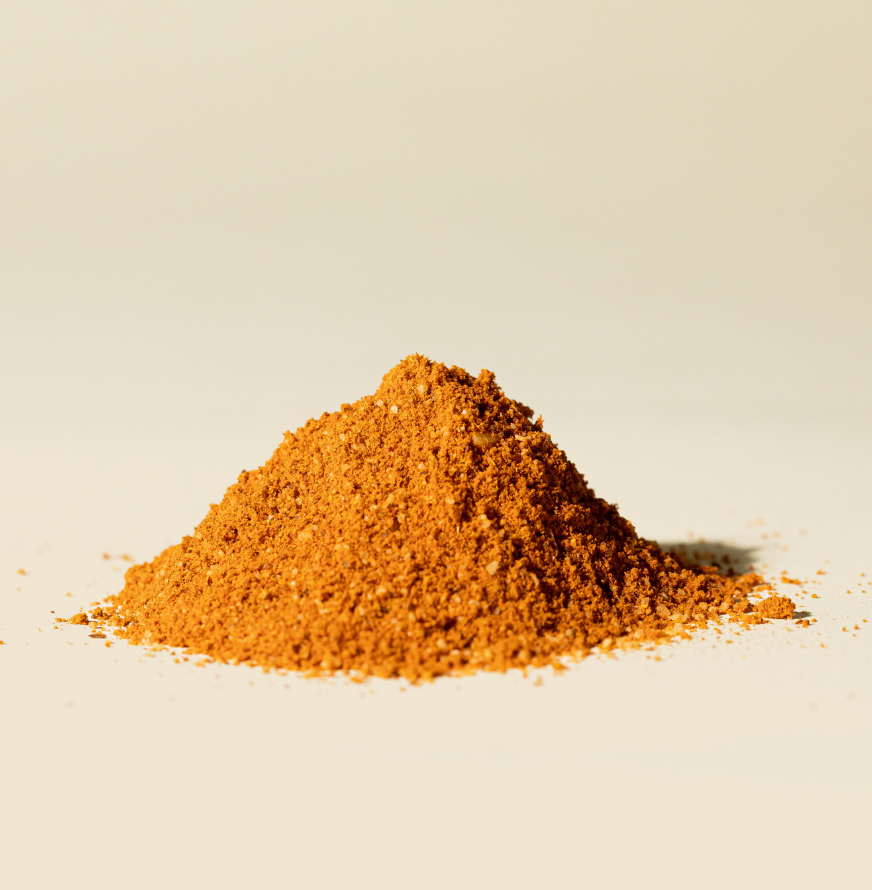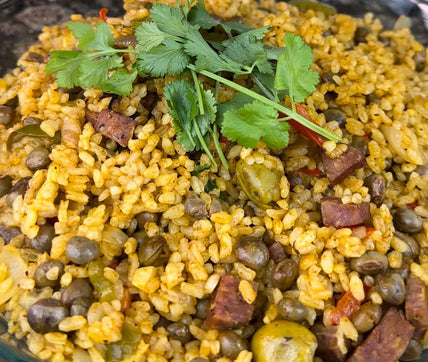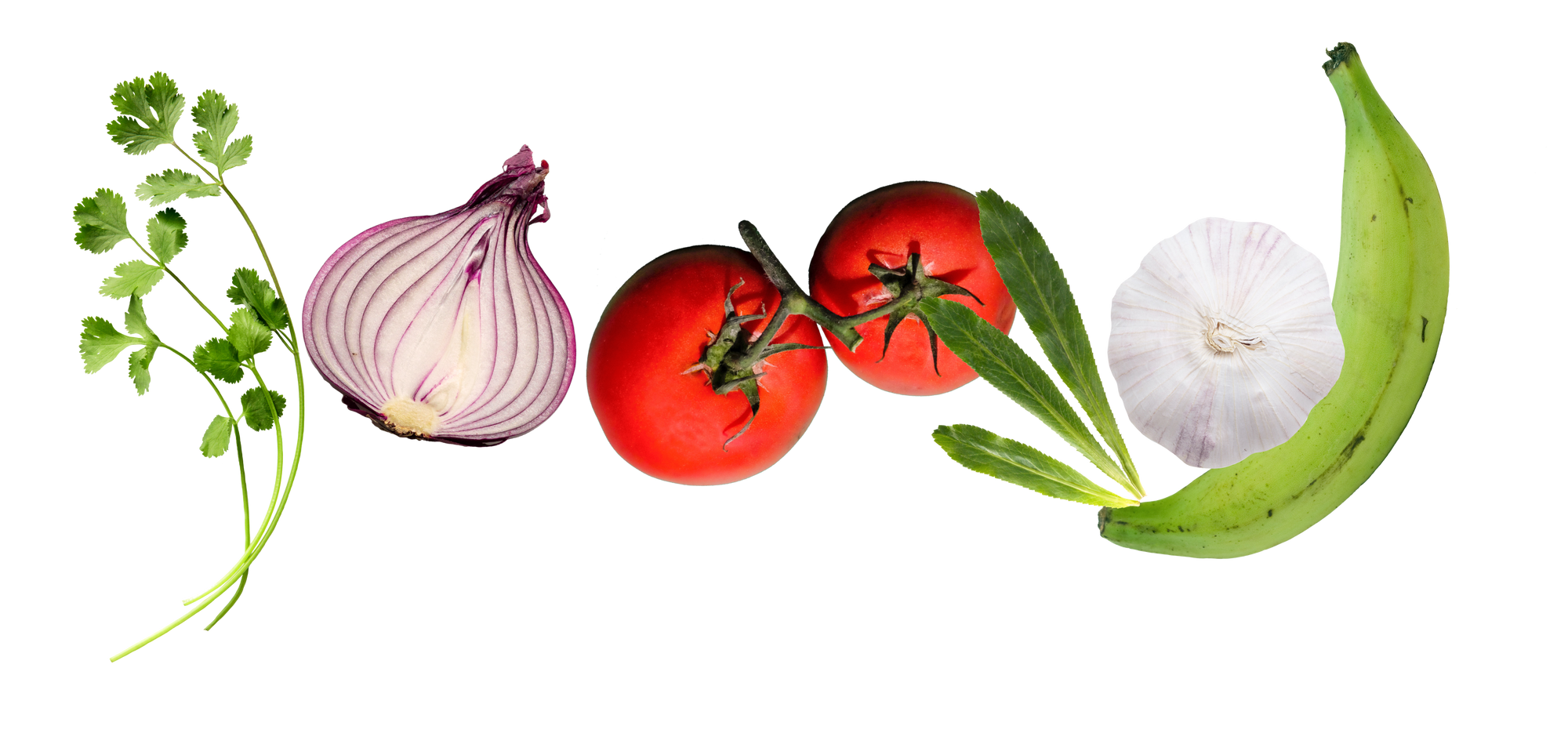
The History of Sazón
Janel Martinez traces back with us this history of sazón and how it became a staple in our community.
By: Janel Martinez | @Janelm
Sazón has an important place in the homes – and hearts – of Latin American and Caribbean families. Its signature hue and comforting flavor ignite everlasting memories that accompany each meal, verdad? The dusting of love on our habichuelas guisadas, carne, and arroz con gandules, as well as our favorite root vegetables and fruits, is an integral part of our traditions and, of course, our recipes.

Whether your family’s resident cocinera curated a personal sazón blend or grabbed a store-bought spice brand, many can recall childhood memories in the kitchen with our beloved seasoning. “It definitely personifies my cooking experience growing up in my mom's kitchen,” says Bren Herrera, a chef and host of CLEO TV's Culture Kitchen. “Sazón is synonymous with great food, period.”
Like many people, the Cuban-Jamaican foodie is known to whip up her own palate-pleasing combination of sazón, including salt, pepper, smoked paprika, cumin, oregano and achiote for its signature color. While there are a number of variations of the sazón recipe, achiote, also known as annatto; coriander, cumin, garlic and oregano are key ingredients within the blend.
Due to the modernization that’s taken place in the food industry, extending the shelf life on our seasonings has superseded maintaining natural, easy-to-pronounce ingredients that our ancestors gifted to us. Traditions, like growing your own herbs and spices or regular trips to la marqueta to get the freshest fixings, evolve with the times, but it’s important that we still honor those traditions by honoring our history.
How did the essence of sazón become a culinary staple in our community? We’ve traced several of its essential ingredients back in time to shed light on how these herbs and spices made their way into our homes:
Achiote
The multi-purpose, vibrant orange-red ingredient has been used for hundreds of years. A pulp that derives from the achiote, or Bixa Orellana, tree, annatto hails from the Amazon basin in Brazil, later settling in other areas of South America and tropical locales like Central America, Mexico, and the Caribbean. The term achiote stems from the Nahuatl word ‘achiotl’, which means shiny seed and its scientific name pays homage to Spanish conquistador Francisco Orellana.

However, it’s undoubtedly an Indigenous treasure that pre-dates the 15th century Spanish conquests. For example, the Taíno people, who are Indigenous to the Bahamas and the Greater Antilles, which includes Cuba, Hispaniola (Haiti and the Dominican Republic), Puerto Rico, and Jamaica, used the natural colorant for culinary, cosmetic, medicinal and spiritual purposes.

Coriander
It’s hard to pinpoint where coriander first originated, but there’s enough evidence linking the spice to biblical times with a reference in the Old Testament’s Book of Exodus. With other historic acknowledgements in Egyptian tombs and Sanskrit writings, coriander comes from the Coriandrum sativum plant – yes, the same herb responsible for two Latin cuisine favorites, cilantro and culantro. The plant’s seeds, or coriander, are extremely versatile and pair nicely with the warm earthiness of cumin.
Cumin
The seeds of the Cuminum cyminum plant are what end up in our seasoning. Whether ground or whole, cumin’s versatility makes the fragrant spice a powerful addition to any dish. It’s referenced in both the Old and New Testaments of the Bible, and it's said that, around the 7th century, traders brought the spice from Egypt and the Eastern Mediterranean across North Africa, and eastward to Iran, India, China, and Indonesia. It ended up in the Americas hundreds of years later by way of the conquistadors.

Garlic
While garlic is a mainstay in so many of our recipes, it’s also present in our remedios, or home remedies. Its medicinal powers can be traced back to garlic’s roughly 5,000-year existence, which began in Central Asia and later appeared in Egypt, Greece and areas surrounding the Mediterranean Sea. Recognized as one of the oldest cultivated plants (Allium sativum), garlic’s ability to enhance the flavors in a savory dish is why it’s no surprise it is found in nearly every cuisine.
Oregano
A popular cooking herb, oregano originates in Greece and has journeyed throughout Europe, North Africa, China and Latin America. Like several of the other ingredients in sazón, it has both culinary and medicinal uses; according to Greek mythology, the herb was created by the goddess Aphrodite as a symbol of joy. Though there are a number of variations for this member of the mint family (Lamiaceae), in the seasoning blend, dried oregano is commonly used as a way to give recipes a pungent flavor.

We’re approaching 90 years of Hispanic- and Latinx-led food brands being on the market, with products reflecting the patterns of immigration, and product offerings shifted as Puerto Ricans came to the states after World War II, Cubans arrived in the 1950s, and Dominicans in the 1960s. Naturally, our age-old seasoning blend from Indigenous and African foodways would make its way onto supermarket and bodega shelves. However, with the addition of artificial dyes and fillers like tricalcium phosphate, they’ve veered away from using the freshest ingredients. Thankfully, there are organic products available, like Loisa’s Organic Sazón, that honor our roots, traditions and vibrant culture. That’s a comforting thought as you enjoy your guisados and other savory dishes. When you sink your teeth into your next piece of pernil, you can trace sazón’s flavor profile from pre-colonial Africa and Asia to modern-day Latin America and the Caribbean.
“If we look back at ancestral cooking, this is just a modern way of literally packaging something that we've already been using,” Herrera says. “Whether it's in a little cheesecloth sachet bag that goes into the big wood fire pot, or whether it's just grinding it yourself in a mortar and pestle, you're in essence getting the same exact thing.”




